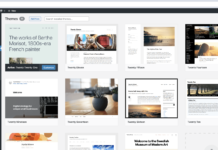Websites built as one of the most popular content control systems used in publishing are being hacked and exploited to supply ransomware and malware to site visitors.
Cybercriminals exploit vulnerabilities in plug-ins, issues, and extensions on WordPress and Joomla websites and their use to serve up Shade ransomware and other malicious content.
Researchers at safety corporation Zscaler have specified how attackers use a hidden listing on HTTPS for malicious functions. Website owners generally utilize this well-known listing to illustrate possession of the area to the certificate authority that scans for the code to realize that the site is confirmed.
However, using exploits to gain entry to these hidden pages, attackers can use them to cover malware and other malicious content material from website directors.

Over the past few weeks, researchers have noticed a spike of threats stowed away inside the hidden directory, with Shade ransomware – also called Trollish – the most common danger deployed on this way.
“The spam emails commonly carry a link to the HTML redirector page hosted on the compromised website online, which downloads the malicious zip report. The user wishes to open the JavaScript file inside the ZIP, and this JavaScript record will download the ransomware from the compromised web page and execute it,” Deepen Desai, VP for safety research and operations at Zscaler, advised ZDNet.
Over 500 websites were compromised, and thousands of attempts had been made to drop ransomware, phishing hyperlinks, and other malicious content material.
Meanwhile, phishing pages are hosted underneath SSL-established hidden directories and pa-up so that you can fool the capacity victim into turning in their usernames and passwords.
The compromised WordPress websites use versions four.8.9 to five.1.1 and tend to be using old CMS themes or server-side software, which researchers recommend is probable the motive for the compromise.
It’s now not regarded who’s behind the cyber-crook campaign. However, Zscaler is operating to tell the owners of the websites about the assaults. The complete list of indicators of compromise is to be included in the attack analysis.





